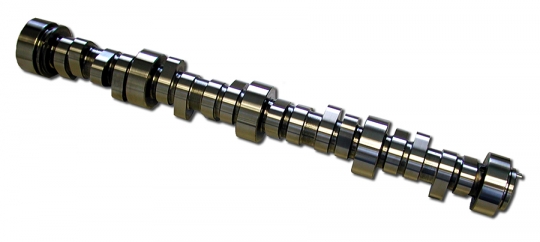Q: I have a 1984 Cutlass with a Chevy 350, flat top pistons, stock cylinder heads, .448-inch lift cam (350 horsepower grind), Edelbrock Performer RPM intake with a Performer 600 cfm carburetor, MSD 6A ignition, headers, and a dual exhaust with Flowmaster mufflers. The rear-end is a stock 7.5-inch GM 10-bolt with 2.42 gears. I have two questions:
- A lot of my friends say I need a 750 cfm carburetor to go faster. Right now, I’m running low 10-second ETs in the 1/8-mile, and high 14s in the 1/4-mile. Do I need a bigger carb?
- I know the rear-end gear is not helping me. Do you think a set of 3.73 gears will help me get in the low nines in the 1/8-mile or do I need more than just gears?
The car is street driven, and I race it just a few times a year on street tires.
A: The main thing you need to do is get your engine/car combination in sync with your camshaft. The grind you have was originally designed for use behind a four-speed manual transmission. With 222 degrees of duration at .050-inch lift, the cam makes power from 2,500 to 5,500 rpm.
The first change you should make to get into the cam’s powerband is to change that rear-end gear. Since the car is a daily driver, we’d suggest a 3.42 ratio. This will give you better acceleration without hurting gas mileage. You probably will have to recalibrate your carburetor after making the gear swap.
If you are running an automatic transmission, swapping in a 2,200 rpm stall torque converter will help lower your ETs. You will see a drop in gas mileage though. As for the 750 vs. 600 cfm carburetor, the Edelbrock 600 cfm carb will be just fine for your combination.


If i were him, I’d find a 4l60 to put behind it, low first gear for off the line acceleration needed in 1/8 mile, 2nd I would put 4.11 gears in it, again, off the line acceleration but with the 4l60 high overdrive it wouldn’t be that much difference between that and a 350/400 tranny, lastly i would do what they said and put a higher stall converter in it. I know someone is going to say something about putting a 60 in it because they can be weak, but that really only comes about in high horsepower applications.
Yes the 4L60E can be weak, but there are upgrades you can do. Every one I’ve picked up at the boneyard I usually take apart and have steam cleaned at a local Trans should and I install new gaskets. The sunshell gear I always change to a “beast” unit from tci. Also you can change the 4 planetary out to the 5 planetary that’s in the 4L65E transmission. And last but not least I always use red pack z clutches that don’t come or bow. You can also hunt down a 4L65E as well it has some of those upgrades as well. I know summit has them on hand as well as everything else I mentioned at great prices.